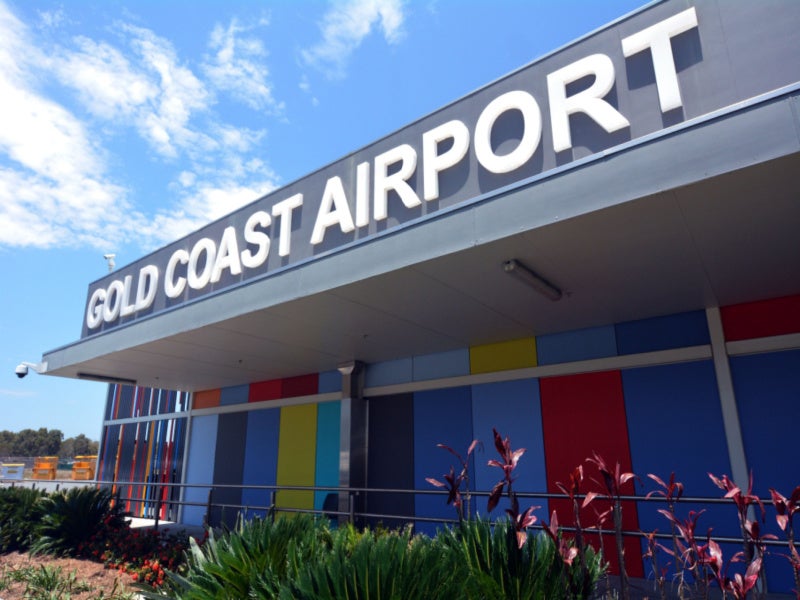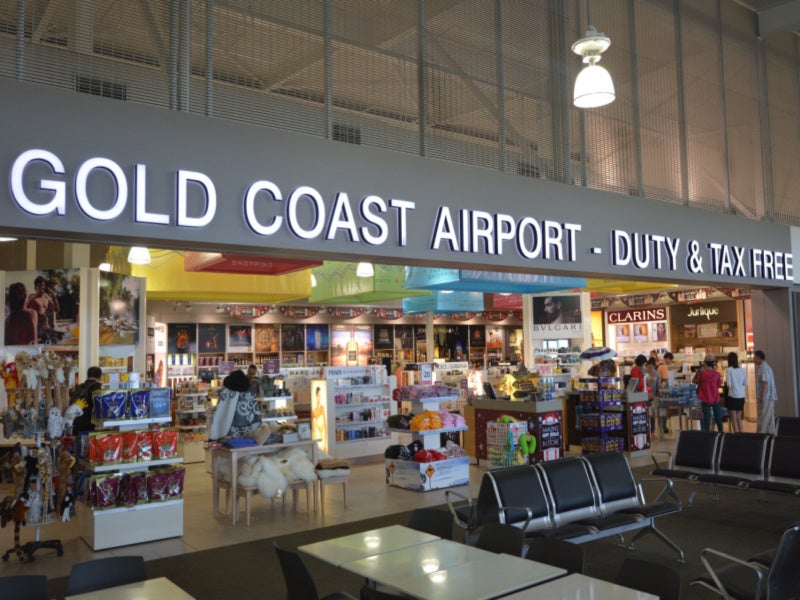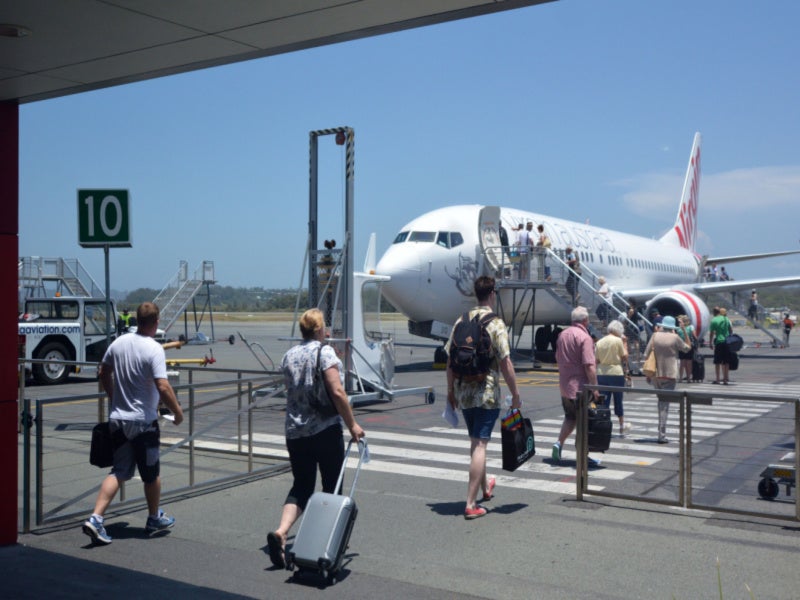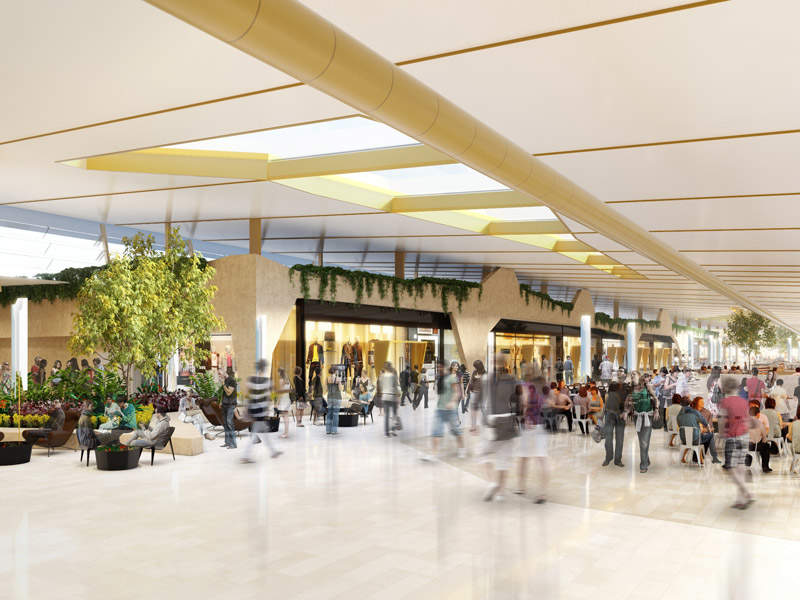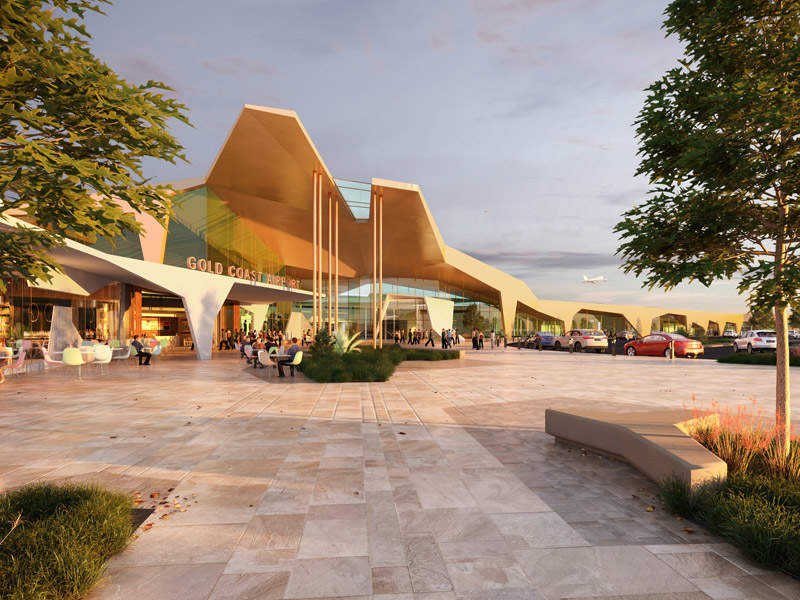The Australian Government approved a major development plan for Gold Coast International Airport, the sixth busiest airport in Australia, in February 2016.
The Gold Coast airport owner and operator, Queensland Airports Limited (QAL), proposed a redevelopment plan to upgrade the existing terminal facilities under a programme named Let’s Invest for Tomorrow (LIFT).
The LIFT project expanded and upgraded the terminal and apron facilities to increase the airport’s capacity to meet future demand, which is projected to reach 16.6 million passengers annually by 2037.
Stage one of the project was completed in 2017 and stage two was completed in November 2022.
Redevelopment details of the terminal
Construction work on the redevelopment commenced in mid-2016, with the majority of works completed by the end of 2017, ahead of the 2018 Commonwealth Games.
In 2018, the airside upgrade was completed including the development of a new apron area that can accommodate up to four additional aircraft and a taxiway with an investment of $86m. The construction of the Airside Processing Zone (APZ) was completed in April 2022.
A large stormwater unit called Stormceptor, measuring 27m x 3.5m in length and 13.3t in weight, was installed at the airport as part of a suite of ground transport infrastructure project activities conducted at Gold Coast Airport in the same year. It is the biggest of its kind in the southern hemisphere.
The stormwater alignment serves the new terminal and the new 192-bed Rydges-branded hotel, located to the south of the Gold Coast Airport terminal. Built with an investment of $50m, the Rydges-branded hotel was opened to guests in 2020.
The new terminal was constructed with an investment of $260m and opened for passengers in November 2022. The investment will be recovered over the operational life of the airport through revenue from commercial developments and other airport charges.
Need for the terminal expansion
Over the last few years, the airport experienced significant growth in domestic and international traffic due to the increase in low-cost and full-service carrier airlines, which resulted in congestion at the aircraft parking stands.
The terminal area was experiencing capacity issues during peak hours in multiple areas, including international arrivals, domestic and international departure lounges and check-in areas.
Capacity issues were believed to significantly limit the airport’s ability to serve future passenger demand necessitating the redevelopment.
The LIFT project at Gold Coast International Airport benefits
In addition to enabling the airport to work more efficiently and effectively, the LIFT project creates significant economic benefits for the Gold Coast region by generating employment opportunities, stimulating economic activities and facilitating tourism.
The project took three years to complete and created 2,000 local jobs and up to 200 jobs during peak construction times.
By accommodating additional flights, the expanded airport attracts more tourists and generates additional revenue for the region.
Gold Coast Airport expansion details
The expansion focused on three major areas, namely the terminal building expansion and redevelopment, construction of five additional aircraft stands with associate taxiways and improvements to the ground transport facilities with sustainability initiatives.
Most of the redevelopment took place to the south of the existing terminal and apron. The entire area marked for future aviation development was cleared in order to create space for expansion.
The terminal expansion spans a gross floor space of 30,000m² across three levels, seamlessly connecting with the existing terminals. The international processing area at the northern end of the terminal is relocated to the southern end to provide international departures and arrival facilities. The vacated area is repurposed for domestic functions by adding swing departure gates and baggage reclaim belts.
The APZ was enhanced to facilitate better passenger flow between the current terminal building and the newly implemented multiple apron ramp system aircraft parking area. This improvement also helps alleviate congestion in the existing terminal by addressing the issue of passenger queues.
Jet bridges to serve domestic and international flights are added to the terminal to service up to four aircraft at a time. Six new gates were constructed to accommodate 19 aircraft on the tarmac. Additionally, four glass aerobridges, a swing gate system, seven escalators and nine lifts, retail space with new shops and cafes, a new boarding facility and border control facilities were added.
The expanded terminal features circulation areas, an international security and screening area, a departure emigration processing area, arrivals duty-free store, arrivals immigration processing, office accommodation for border agencies, baggage claims and arrival halls.
The terminal also features a departure lounge, premium retail and dining facilities and a VIP room.
The airport built an exclusive lounge with a fusing beach and rainforest theme for athletes and officials associated with Gold Coast 2018 Commonwealth Games.
Apron and taxiway expansion at the airport
The apron expansion added five new Code E aircraft stands and associated taxiways.
Stands were constructed in two stages. Completed in April 2018, stage one includes the development of three Code E stands and taxiway access to the parallel taxiway, while the remaining two stands and associated taxiways was completed by early 2021.
Ground transport facilities upgrade
The airport is renovated to incorporate new facilities, including a relocated taxi staging area and covered pedestrian walkways and boarding areas for coaches, mini-buses and limousines, as well as circulation roads for all ground transport. Two additional aircraft parking stands were also constructed.
Contractors involved in the airport terminal redevelopment
Brisbane-based construction, civil and mining company Watpac was awarded the contract to manage stage one construction work in 2015. The company provided the design team with construction, buildability and schedule advice for the construction works.
QAL awarded a contract to Lendlease, a construction and real estate company, in March 2019 for the development of the airport’s southern terminal.
Project management services provider RCP was the project director and conducted project management, superintendency, as well as specialist project and operational readiness, activation and transition programming roles for the project.
The design and construction of the Gold Coast Airport expansion were managed by architecture firms ADCO and HASSEL Studio. Maynard Design Consultancy was engaged to create a new wayfinding and signage system in partnership with HASSELL for the major Southern Terminal Extension project.
UFL, a manufacturer of commercial furniture, assisted in the design, supply and installation of check-in counters, gate counters, passenger seats, public guide tape barriers and furniture fittings for the airport.
Electrical product distributor IPD Group and modular enclosures provider Elsteel were responsible for the supply and assembly of new switchboards for the Gold Coast airport expansion project.
SPEL, a stormwater specialist, manufactured the Stormceptor, which was installed at the airport under the supervision of civil contractors SEE Civil.

